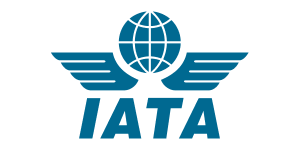Global passenger traffic for March 2019 rose 3.1%, compared to the same month a year ago, reported the International Air Transport Association (IATA) this week. This was the slowest pace for any month in nine years, said IATA.
The slowdown began in February, when IATA reported that global passenger traffic rose 5.3%. At that time, this was the slowest rate of growth in more than a year, but was still in line with long-term demand trend, and came after a strong performance in January.
IATA says that the March slowdown in the growth rate was largely due to the timing of the Easter holiday, which fell nearly a month later than in 2018, and the slower growth should not be a long-term trend. On a seasonally-adjusted basis, the underlying growth rate has been relatively  steady since October 2018 at a 4.1% annualized pace, says IATA.
steady since October 2018 at a 4.1% annualized pace, says IATA.
Alexandre de Juniac, IATA’s Director General and CEO, explains: “While traffic growth slowed considerably in March, we do not see the month as a bellwether for the rest of 2019. Nevertheless, the economic backdrop has become somewhat less favorable, with the IMF having recently revised its GDP outlook downward for a fourth time in the past year.”
International Passenger Markets
March international passenger demand rose just 2.5% compared to March 2018, which was down from 4.5% year-over-year growth recorded in February and almost 5 percentage points below its five-year average pace. All regions showed growth except the Middle East.
In the Americas, Latin American airlines had the fastest traffic growth at 5.5%, compared to a year ago, up from 4.6% in February. Latin America was the only region to show an increase in the year-on-year growth rate for March compared to February.
In seasonally-adjusted terms traffic continues to trend upward sharply, despite the economic and political uncertainty in some key countries.
North American airlines posted a 3.0% traffic rise in March compared to the year-ago period, which was down from 4.2% year-on-year growth in February. On a seasonally-adjusted basis, traffic has been trending strongly upwards, however.
In the rest of the world, European carriers saw March demand up 4.7% over March 2018, although this was down from 7.5% annual growth in February. The result partly reflects falling business confidence in the Eurozone and ongoing uncertainty about Brexit. Asia-Pacific airlines’ traffic climbed 2.0% in March, compared to the year-ago period, which was down from 4% growth in February. Results were stronger on a seasonally-adjusted basis.
In the Middle East, passenger demand fell 3.0% in March, marking a second consecutive month of declining traffic. This reflects the broader structural changes in the industry which have been taking place in the region.
African airlines’ demand increased 2.1% compared to March 2018, down from a 2.5% rise in February. The upward traffic trend has softened since mid-2018 in line with falling business confidence in some of the region’s key economies, says IATA.
Domestic Passenger Markets highlights
Domestic demand rose 4.1% in March, down from the 6.2% growth recorded in February that was driven largely by developments in China and India, which showed growth of 2.9% and 3.1% in March, respectively. In February, China had topped the growth chart for a second month in a row, up a strong 11.4% year-on-year, although this was down from 14.5% growth in January compared to a year ago.
In March, the Russian Federation turned in the highest growth rate of 14.2% followed by the U.S. with a domestic passenger growth rate of 6.3%.
Brazil’s domestic traffic increased 5.8% in February, compared to a year ago. This was the fastest pace in more than six months and more than double the 2.6% year-over-year rise for January. Brazil was the only domestic market tracked by IATA to show an increase in the year-on-year growth rate compared to January 2019 that month. Domestic passenger traffic growth fell to 3.2% in March in Brazil.









